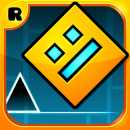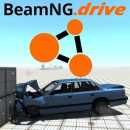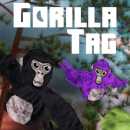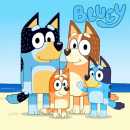Review: Gorilla Tag
When I first slipped on my virtual reality headset and entered the realm of Gorilla Tag, I felt as though I were tossed into an adrenaline-charged jungle gym where every leap and bound mattered. The experience was unlike any typical VR game I have ever played. From the moment I began my first session, I was immersed in a game that demanded bothphysical energy and mental agility. The gameplay strayed far from traditional video game mechanics; it forced me to rely completely on my body, which was both exhilarating and physically demanding. The freedom of movement, the challenge of navigating the virtual space, and the constant pursuit of agility left me invigorated and determined to explore every facet of this unique experience.
Mastering the Art of Movement
The heart of Gorilla Tag lies in the movement mechanics. In this game, you do not use standard locomotion methods. Instead, you propel yourself by mimicking the motion of a gorilla, using your arms as levers to swing, push, and jump from one surface to another. I soon discovered that momentum and timing were my best friends in this environment. Every muscular effort felt inextricably tied to a moment of triumph or a near miss. Mastering the art of movement was about learning the subtle nuances of swinging from branches, vaulting over obstacles, and reaching seemingly unreachable platforms. Each dive and every well-timed leap felt like a burst of freedom as I integrated my ownphysicality into the virtual space.
The Challenge of Mimicking Nature
What captivated me the most was the game’s uncanny ability to simulate natural, primal movement. As I swung from tree limb to tree limb in a vividly rendered landscape, I was reminded of the raw power of nature. The demands of Gorilla Tag forced me to become in tune with my body. Pushing my arms, gauging the distance to the next handhold, and adapting to the momentum required a level of concentration that blurred the lines between reality and simulation. The effort was palpable with each swing and landing, but it was precisely this realism that made every session feel authentic and rewarding. I found that as I grew more adept, the feedback from my virtual environment became almost intuitive; it felt like a dance between my body and the virtual world.
Redefining Multiplayer Dynamics
The multiplayer component of Gorilla Tag is equally compelling. In VR, collaboration and competition take on a new meaning; the game seamlessly blends both. In multiplayer sessions, I found myself darting through digital canopies with friends and unfamiliar players alike. Whether chasing or evading, every interaction was charged with an energetic mix of anticipation and teamwork. This environment encouraged spontaneous social exchanges that were both competitive and cooperative. It was fascinating to experience this dynamic, as every encounter served as a mini-adventure, full of unexpected maneuvers and fleeting alliances. I recall matching wits with a highly skilled player whose rapid movements pushed me to rethink my approach in real time.
Immersive Physical Engagement
Every VR session in Gorilla Tag is a blend of physical activity and intense concentration. Unlike conventional video games that rely predominantly on button presses, Gorilla Tag demands a full-body workout. I noticed an immediate change in how I approached gameplay; my arms were in constant motion, my heart rate increased, and every stretch felt purposeful. The physical engagement is not just a reflection of the game’s realism, but also a celebration of human agility. There is a profound satisfaction in knowing that my movement in the physical world directly translated to my movement in the virtual jungle. This direct correlation between physical exertion and virtual progress reinvigorated my appreciation for VR as a medium capable of blending exercise with entertainment.
Innovative Game Design and Intuitive Controls
Gorilla Tag does not overwhelm you with convoluted instructions or complicated user interfaces; instead, it offers a design that feels as natural as the movements it simulates. The controls are straightforward, yet they require precision and practice to master. With time, I developed a heightened sensitivity towards the positioning of my arms and the subtle shifts in my weight. The game rewarded those who could translate slight changes in posture into significant progress through the level. One of the most enjoyable aspects was the immediate feedback—both visual and haptic—that made learning and mastering the controls a rewarding process. Every session became an exercise in muscle memory and spatial awareness, teaching me to rely on intuition over scripted commands.
An Engaging Playground of Obstacles and Challenges
The environments in Gorilla Tag are vibrant and filled with challenges that kept me engaged from the start of each session. The game world is teeming with obstacles that require careful planning and precise timing. I encountered vast, open canopies in some levels, tight corridors in others, and hidden nooks that tested my agility at every turn. The organic layout of each map contributed to a sense of discovery—it was almost as if I were exploring an uncharted jungle where every branch and crevice held a secret waiting to be uncovered. This variety ensured that every game session was unique, providing a seamless blend of physical exertion and mental strategy. I frequently found myself planning my next move as if I were navigating an intricate maze, with each decision impacting my journey through the digital wilderness.
Artistic Visual Aesthetics and Environmental Design
The visual design of Gorilla Tag stands out in its distinct simplicity. The art direction captures a raw, yet captivating essence by depicting a combination of stylized natural landscapes with a hint of surrealism. The color palette is bothearthy and invigorating, mirroring the intense physicality of the gameplay. As I swung through areas painted with broad strokes of green, brown, and splashes of unexpected color, I appreciated the game’s commitment to both functionality and artistry. Every detail, from the texturing of surfaces to the fluid animation of characters, was crafted to keep the player deeply immersed in the experience. I found that the aesthetic choices not only enhanced the visual appeal but also played a significant role in conveying the game’s primal energy. The environment felt like an extension of the gameplay itself—an organic backdrop that evolved as I navigated its challenges.
Immersive Soundscape and Responsive Audio Design
While visuals are a critical component of Gorilla Tag, the sound design is equally impressive. The audio environment transforms a typical VR session into an incredible sensory experience. I was struck by how the sound cues in the game were finely attuned to my physical activity. The soft rustling of virtual leaves, the ambient background noises, and the responsive sounds accompanying each movement all contributed to the realism. Sound played an essential role during high-stakes chases, where every subtle audio hint became a vital clue in anticipating the actions of other players. In moments of intense gameplay, the immersive soundscape heightened my adrenaline, making the digital jungle feel overwhelmingly real and immediate. The careful orchestration of environmental sounds not only enriched the game world but also significantly enhanced the overall experience.
Dynamic Social Interactions and Personalized Connections
One of the most striking aspects of Gorilla Tag is the bond and spontaneity forged between players. As I traversed the virtual environment, I encountered a diverse array of individuals, each bringing their own style and approach to the game.The interactions ranged from playful banter during relaxed moments to intense bursts of competitive energy when chasing or evading. It was in these moments that I truly appreciated the social dynamics at play. Each interaction was imbued with humor and athleticism, and the system allowed for organic communication without the need for a rigid interface. I discovered that the genuine camaraderie in the game stemmed not just from the challenge of the pursuits but from our shared passion for the raw, unfiltered dynamics of free movement. This blend of collaboration and friendly rivalry contributed to a deeply personal connection with the community and the game itself.
Balancing Simplicity with Strategic Depth
The beauty of Gorilla Tag lies in its ability to balance intuitive simplicity with layers of strategic complexity. While the overall concept is straightforward—move by using your arms like a gorilla—the depth of execution requires both physical agility and strategic planning. I observed that as I became more adept, the game gradually revealed its intricate design behind the fluid movement system. It is a puzzle of natural physics and calculated risk: every leap carries a potential reward if executed at precisely the right moment. I was constantly intrigued by how a seemingly simple action could be reimagined and refined into a precise, athletic feat. The game thrives on this duality, offering a simple premise that, upon deeper engagement, blossoms into a challenging and rewarding game of anticipation, timing, and spatial awareness.
Fluidity and Realism in Animation
The animation quality in Gorilla Tag is another element that deserves commendation. Each movement, each gesture from my virtual avatar is rendered with a fluidity that makes the experience feel genuinely organic. I remember the moment when I transitioned from a slow, deliberate climb to a high-speed glide—my hands and body moved in meticulously animated sequences that mimicked natural, parkour-like actions. This attention to detail not only elevated the realism of the interactions but also made the game accessible to players who prioritize a lifelike physical simulation.Every percentage of movement accuracy contributed to an environment that was both challenging and gratifying. When I successfully executed a particularly complex maneuver, the smooth feedback loop of the animation system gave me a sense of tangible satisfaction, reinforcing my connection to the digital wilderness.
Immersive Level Design and Thoughtful Map Layouts
Gorilla Tag boasts a series of maps that are ingeniously designed to push players’ limits while still offering moments of discovery and wonder. Each level felt like a handcrafted sandbox where the architecture of natural obstacles was intertwined with elements that challenged my agility and reflexes. I explored expansive outdoor arenas filled with natural textures juxtaposed against abstract structures that defied gravity. The map layouts guided my movement in subtle ways—inviting exploration while testing my spatial reasoning skills. There were times when I would pause briefly to study the environment, recognizing that every ledge and every gap was placed not just to hinder, but to invite creative navigation. The elegance of these designs lies in their simplicity; they do not overcomplicate the experience, yet they leave ample room for expressive movement and tactical consideration.
A Playground of Endless Variations and User-Driven Adventures
The true charm of Gorilla Tag is its ability to morph each session into a unique adventure reflective of the players’creativity. I embraced that the game did not confine me to a rigid set of rules but instead laid down a framework upon which my own experiences could flourish. Whether I was evolving new strategies to outmaneuver opponents, exploring unexpected shortcuts, or even inventing my own movement techniques, the game always had a way of surprising me.Each new session revealed fresh nuances and functions, allowing me to reinterpret the gameplay with every attempt. In this sense, Gorilla Tag becomes more than a collection of levels; it transforms into a living, breathing playground where the spirit of improvisation and adaptability reigns supreme.
Exploring the Balance of Competitive Spirit and Personal Growth
I found that the competitive environment in Gorilla Tag seamlessly blended with opportunities for personal growth. Every match provided not merely a chance to outperform others, but an invitation to better oneself. As I engaged in friendly chases and carefully calculated escapes, I began to appreciate the nuances of timing and movement efficiency. I invested countless hours refining the precision of my swings and the coordination of my body, feeling a tangible improvement with every session. This balance of competitive spirit and self-improvement is a hallmark of a well-tuned experience. This game inspires you to test your boundaries while avoiding overly harsh penalties, creating a space where each setback becomes a chance to learn and grow. It was both a test of agility and a journey of self-discovery—a realization that perfection is not immediate, but built gradually with each attempted leap.
Emotional Engagement and the Thrill of the Chase
The primary emotional draw of Gorilla Tag is undoubtedly the thrill of the chase. In a simple yet profound twist, every step and leap comes with an emotional charge that is hard to replicate in conventional gaming. I vividly recall moments of exhilaration where every moment in the chase felt magnified—my heart pounded, my focus sharpened, and every movement felt intentional. The game taps into elemental instincts, evoking the same excitement one might feel while playing a sport in the real world. There's a palpable sense of urgency when playing, as if every second matters and every movement could alter the outcome of an encounter. This emotional engagement transforms Gorilla Tag into a visceral experience, one where the very act of pursuit turns into an artistic display of physical prowess and mental tenacity.
Experimenting with Strategies in a Fluid Environment
Strategy plays an essential role in Gorilla Tag, even if it is not overtly apparent at first glance. I spent many hours experimenting with different approaches to navigate the digital landscape efficiently. By altering my rhythm, adjusting the timing of my leaps, and even embracing unconventional paths, I discovered that there is an intrinsic art to movementitself. The game encouraged me to experiment without fear of immediate repercussions; every mistake served as an educational moment. I learned that a well-planned maneuver could sometimes be more effective than sheer speed, and that occasionally taking a moment to gather momentum could yield better results. In this creative process, my mindset shifted from reacting to actively strategizing my next move. It was a gratifying evolution—one that transformed my VR sessions into a continuous learning experience where physics, planning, and intuition intertwined seamlessly.
Customization and the Personal Touch in Gameplay
Earlier in my time with Gorilla Tag, I was pleasantly surprised by the extent of customization available within the game. I found that being able to personalize certain elements of my avatar and movement style added a layer of individuality to the experience. The opportunity to tailor tweaks to control sensitivity and map preferences allowed me to refine my approach in unique ways. Effects that resonated with my physical movements provided a sense of ownership over my progress. This customization fostered a personal connection to the game; it was as if the environment were responding to my inherent style and preferences. I cherished the fact that every tweak and personalized setting not only modified the gameplay but also enhanced my identification with the virtual avatar, making it an organic extension of myself within the digital realm.
Moments of Triumph and the Satisfaction of Mastery
There is an undeniable sense of triumph that accompanies each successful maneuver within Gorilla Tag. I vividly remember a particular session where I conservatively planned a series of leaps to navigate a particularly challenging map. When each movement aligned perfectly, and I reached the far end of the arena with a cascade of well-timed swings, I was overwhelmed with a feeling of accomplishment. The act of overcoming a seemingly insurmountable obstacle using only the natural mechanics of movement is deeply satisfying. In those moments, it was clear that the game was about more than just instantaneous action—it celebrated the art of persistence, careful planning, and the satisfaction found in gradual mastery. Every successful maneuver reinforced my resolve and motivated me to continue pushing the boundaries of my own capabilities.
Immersive Environment That Feels Alive
What deeply impresses me about Gorilla Tag is the living, breathing quality of its environment. As I moved across different maps, I noticed that every element of the landscape—from the subtle sway of virtual leaves to the dynamic interplay of light and shadow—contributed to an immersive ambience. The game created a feeling of being in a delicate ecosystem where every physical movement could trigger a cascade of minor yet significant reactions. I found that the environment itself became a character in the game, reacting to my presence in ways that were almost tangible. Whether it was the rustle of leaves under my imagined weight or the echo of my movement bouncing off virtual structures, every sensory detail worked together to cement the experience as profoundly authentic.
Exploring the Boundaries of Virtual and Physical Reality
My time playing Gorilla Tag radically reshaped my understanding of virtual reality, revealing its remarkable capacity to merge digital experiences with our tangible world. Every session was a testament to how powerful VR can be in replicating the raw, unmediated aspects of physical movement. I felt a deep connection between my body and the digital avatar it controlled. There were moments when I lost track of the division between my physical self and its virtual representation, as if both were seamlessly intertwined. The fluidity with which emotions, physical exertion, and environmental interaction merged into a single, cohesive experience was remarkable. It pushed the envelope of what is conventionally expected from a video game, inviting players to embrace the full spectrum of human movement as an integral part of the gaming narrative.
Appreciation for the Unscripted and the Unpredictable
Perhaps what makes Gorilla Tag most endearing to me is its refusal to adhere to a script. In every session, the unpredictable nature of my movement and the interaction with other players meant that no two experiences were ever the same. I discovered that the spontaneity of the environment led to moments of pure joy and unexpected success. Whether I found myself in an impromptu chase with a quick-thinking friend or navigated a surprising obstacle by pure chance, the thrill of the unexpected kept me coming back. This unpredictability fostered a sense of endless opportunity where creativity and intuition were the true arbiters of victory. It felt as if the game was constantly challenging me to think on my feet, adapt to sudden changes, and savor every moment of unpredictable action.
Conclusion
Graphics 4
Gameplay 4
Controls 4
Replay Value 4
Provides an engaging physical workout that challenges both body and mind;
Features unique movement mechanics that enhance the sense of realism;
Delivers an immersive multiplayer experience that fosters social connection;
Offers a dynamic environment that pushes users to strategize and improvise;
Boasts vibrant visuals and an atmospheric sound design to enhance immersion;
Encourages creativity and adaptability during gameplay;
The high physical demand may not be suitable for all players;
Mastering the movement mechanics comes with a steep learning curve;
The gameplay modes can feel limited, leading to potential repetitiveness;


































